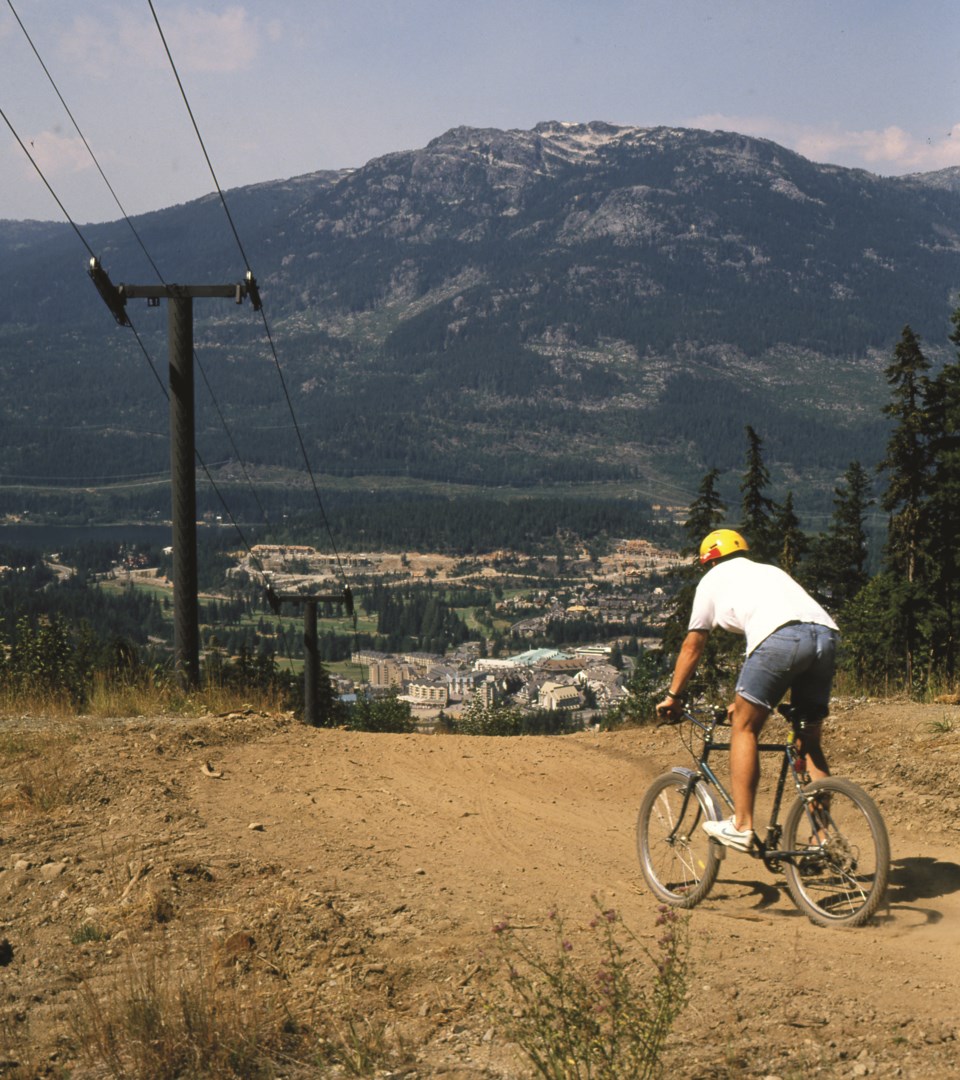Like much of the Whistler community, we at the museum have the Whistler Mountain Bike Park on our minds. When talking about the history of the bike park we often hear that mountain bike design and rider ability had to catch up before the bike park could take off. Thanks to generous funding from 100 Women of Whistler, and the local community who have been generous with their time, we have heard some great reflections on that recently through oral histories.
Not interested in road biking, Jim Kennedy, or Jimbo, was inspired to buy a mountain bike after watching ET, and one scene in particular where characters ride bikes through the forest. Purchasing one of the first bikes when Dores Burma opened the door to Summit Cycles in 1983, Jim was the proud new owner of a $500 Nishiki Bushwacker. Not everyone was thrilled with his purchase, however. Mountain bike riders regularly copped abuse in the Village in regards to their choice of transport, as expletive-laced shouts of “get a real bike” rang out.
In the mid-1980s, long before the bike park opened, Jimbo and friends were taking their bikes up the gondola to mid-station to ride down as part of a stag party. Luckily for them, a friend was working at mid-station, and with much encouragement let them stay on until the top of the mountain. A group filled with many former downhill racers, the ride was fast, wild and they didn’t see a single other person. Starting on snow and then following Jolly Green Giant, Jimbo remembers, “we were on these bikes, just handbrakes, no shocks or anything like that. By the time you got down your hands were just seized.” Additionally, the rim brakes could get so hot they would burn or cause the tires to blow. So to ride more comfortably the bike technology had to catch up.
A few years later, the Kamikaze Descent, part of Labatt’s Can-Am Challenge in 1989, followed the 15-kilometre service road down from the top of Blackcomb Mountain, still no features involved. When Backroads Mountain Bike Adventures started to offer commercial downhill tours on Whistler Mountain, many of the trails ridden were still the gravel access roads dotting the mountain, although Eric Wight and other passionate individuals had started to build some mountain-bike-specific trails across the mountain.
The opening day of the bike park in 1996 saw 500 keen riders take to the lifts. When Intrawest took over Whistler Blackcomb in 1998, the company was convinced, with much lobbying, to further invest in the bike park. However, rider ability and gear still had some catching up to do. After the first staff demo day an employee from Guest Relations remarked, “after trying the trails I couldn’t believe some of the people who had been getting on the lifts, even the greens are much harder than we were led to believe. We warn people that they need enclosed, appropriate footwear and I’ve seen people in slip-on flats go up, completely unprepared for what they are about to do.” Today it is recommended that every rider has a full face helmet, gloves, armour and a full suspension downhill bike.
Some things change while others stay the same. A commonly heard adage in the 1990s was “you can tell if someone is a Whistler local because their bike is worth more than their car.” In many cases this still rings true today.




